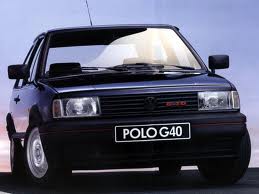


This edition of the Toyota Camry 3.0 V6 is the 4 speed / Auto version and was first brought out in 2002. This was at around the same time as the introduction of the 2002 Ferrari Enzo 6.0 V12 and the 2002 Pagani Zonda C12 S 7.3.This particular Toyota Camry has a 2995cc Naturally Aspirated Petrol powerplant with 6 cylinders in a V formation.
The Camry shares its Petrol V6 engine configuration with the likes of the 2014 Radical RXC 3.5 V6 Twin Turbo and the 2015 Radical RXC Turbo 500 3.5 V6. If you're looking for other fast cars which share the Camry's Rear Wheel Drive, Saloon combination then how about the 1982 Fiat X1/9 1.5 8V or the 1965 Aston-Martin DB6 1965.
Weighing in at 1500 kgs (3306 lbs) this makes the Toyota Camry 3.0 V6 in the same weight category as the 2023 Porsche Boxster Spyder RS 4.0 982 or the give or take 50kg.
In terms of power the 2995cc 24V V6 engine produces 184 bhp (137 kW) @ 5300 rpm similar to the 2020 Abarth 695 70th Anniversario 1.4 Turbo (177 bhp) or the 2020 Audi A1 Sportback 40 TFSI S tronic S line (197 bhp).
The Naturally Aspirated V6 throws out 201 lb-ft (272.5 Nm) @ 4300 rpm placing it with cars of similar torque performance figures such as the 2020 Abarth 695 70th Anniversario 1.4 Turbo (184 lb-ft) or the 2020 Audi A1 A1 Sportback 35 TFSI S tronic S line (184 lb-ft).
If one combines the weight with power or torque performance for the Toyota Camry you can get a better idea of it's real world performance.
![Maserati Ghibli 3.0 V6 Turbo Diesel - [2013] image Maserati Ghibli 3.0 V6 Turbo Diesel - [2013] image](/editionimages/1920.jpg)
The 2013 Maserati Ghibli 3.0 V6 Turbo Diesel (147.6 bhp per ton) has similar Bhp Per Ton stats as the Toyota Camry.
The Toyota Camry has a Power to weight ratio of 122.6 bhp per ton and 134.0 lb-ft per ton. Bhp Per Ton figures of the 2002 Camry competing with the 2013 Maserati Ghibli 3.0 V6 Turbo Diesel (147.6 bhp per ton) or the 1954 Jaguar XK 140 SE (147.6 bhp per ton).
If you agree with the late great Carroll Shelby then arguably an even better indicator of potential performance, Torque. Use weight as well and you end up with - Torque per ton, with the Toyota Camry generating around 134.0 lb-ft per ton. If you're curious as to what other cars have as much torque to weight then look no further than the 2008 Audi TT Roadster 2.0T FSI 200 (159.0 lb-ft per ton) or the 1998 Honda NSX 3.2 V6 (158.8 lb-ft per ton).
With a 0-60mph time of 8.80 secs or a 0-100km/h (0-62mph) of 9.1 secs, this made the Toyota Camry 3.0 V6 as fast as the 2013 Vauxhall-Opel Zafira Tourer CDTi BiTurbo (8.80 secs) the the 2000 Mitsubishi FTO 2.0 GPX (8.80 secs) the or the 1987 Aston-Martin Lagonda Series 4 5.3L V8 (8.80 secs). This Toyota Camry 3.0 V6 is also faster than the 2008 Audi A4 1.8T Avant (8.90 secs) the 2005 Suzuki Swift 1.6 VVT Sport (8.90 secs) the 2000 Vauxhall-Opel Omega 3.2 V6 Automatic (8.90 secs) the and the 1990 Volvo 940 2.3 Turbo (8.90 secs).
When talking about the performance of the Toyota Camry on the drag strip it can reach a quarter mile in an estimated 16.64 secs @ 82.2 mph. Similar performance down the quarter mile can be found with the the 1993 Mercedes E Class 400 W124 (16.58 secs), the 1966 Ford Mustang GT Convertible 289 4.7 V8 (16.59 secs), and the 1996 Alfa-Romeo GTV 3.0 V6 Lusso (16.60 secs).
Modern performance cars are often artificially restricted to 155mph. The 2002 version of the Toyota Camry 3.0 V6 has a maximum speed of 140mph.
If maxing out your car on the AutoBahn is your thing and you're wondering what's faster than the 2002 Toyota Camry 3.0 V6 then how about the 2020 Lotus Elise Cup 250 1.8 Supercharged (151 mph), the 2013 Volkswagen-VW Polo R WRC 2.0 Turbo (151 mph), or the 2006 Volkswagen-VW Golf GTi Edition 30 DSG (151 mph).










Mini Cooper John Cooper Works GP 1.6 Turbo
Engine: Turbo Petrol | 1598cc 16v St4
Top Speed: 150 mph
0-60mph: 6.10 seconds

DeTomaso Pantera GT5 S 4.9 V8
Engine: Naturally Aspirated Petrol | 4942cc 16v V8
Top Speed: 220.4 kph
0-100kph: 6.7 seconds



















